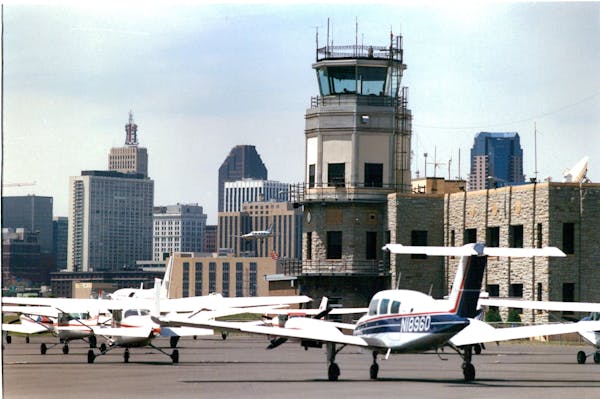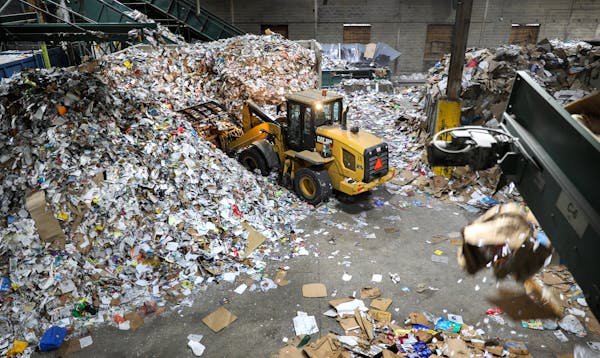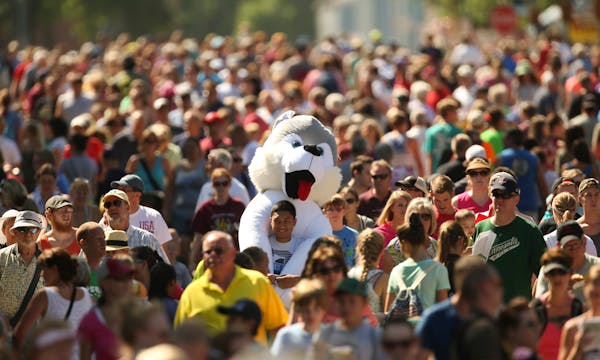Are motorcycles allowed to be louder than cars in Minnesota?
Listen and subscribe to our podcast: Via Apple Podcasts | Spotify | Stitcher
Mention motorcycles, and one feature gets lots of people revved up: Noise.
Loud bikes are a pet peeve of many who say the unbridled mufflers make their bodies shake, hurt their ears and wake them from sleep. Social media is filled with daily rants about roaring choppers.
So why are motorcycles allowed to be so much louder than cars and trucks? Do police actually ticket the worst offenders? A reader recently posed these questions to Curious Minnesota, the Star Tribune's community reporting project answering your questions.
Motorcycle noise levels are regulated by the U.S. Environmental Protection Agency (EPA) and state laws, with some states having different allowances. In general, motorcycles and exhaust systems marketed for on-highway motorcycles built after 1986 are limited to 80 decibels, said Andria Yu of the Motorcycle Industry Council.
The EPA in 1975 identified motorcycles as a major source of noise. Exceptionally loud motorcycles are almost always the result of modifications made by owners after purchase, said Ralph Pribble, a spokesman for the Minnesota Pollution Control Agency (MPCA).
What constitutes noise pollution? The MPCA defines loud motorcycles as those emitting between 85 and 95 decibels, depending on the speed and age of the bike, at 30 feet from the center of the travel lane. Modified bikes can reach volumes of 120 decibels, comparable to a loud rock concert, according to the EPA. The Occupational Safety and Health Administration (OSHA) warns that exposure to noise in excess of 100 decibels is safe for only 15 minutes.
State law prohibits owners from modifying a motor vehicle to "amplify or increase the noise emitted by the vehicle." The law also mandates that "the exhaust system shall not emit or produce a sharp popping or crackling sound."
That's not quite as crystal clear as it may seem, said Eagan Police spokesman Aaron Machtemes.
"When you read the law it is somewhat ambiguous and open to interpretation," he said. "What may seem obvious to some people, others may have a different opinion in court trying to prove an exhaust system was 'crackling' and beyond factory specs."
Machtemes acknowledged that it is frustrating when one has to pause a conversation when a loud motorcycle drives through neighborhood, but said citing offenders hinges on officer being close enough to verify the noise and in a position to make a stop.
"I'm happy to enforce when it arises, but it's not something I come across a lot," he said.
Few motorists are cited for loud vehicles. Court records don't break down charges by the type of vehicle, but 727 Minnesota drivers were charged for muffler violations in 2017. Last year that dropped to 493, and as of Oct. 9, 383 motorists have been cited for violating the law this year, according to state court records.
"If there was a rise in complaints from the community, I believe officers would be more prone to target that violation vs. other violations they are looking for," Machtemes said.
Some advocates cling to the once popular slogan "Loud Pipes Save Lives," saying the ear-piercing sound alerts motorists to their presence and helps avoid collisions.
But the National Highway Traffic Safety Administration (NHTSA) casts doubt on that theory. The agency found 76% of motorcycle crashes happen from the front, while the noise is emitted from the rear.
Instead of relying on noise to be safe, the Minnesota Motorcycle Safety Center suggests riders wear brightly colored protective gear for high visibility, use a headlight modulator and install a louder horn.
Tim Harlow • 612-673-7768
---
If you'd like to submit a Curious Minnesota question, fill out the form below:
Read more Curious Minnesota stories:
If Duluth is such a great outdoors city, where are the bike lanes?
Why do Minnesota coyotes howl when trains go by?
Did German POWs really work on Minnesota farms during World War II?
What was the most destructive tornado in Minnesota history?
Who decides when the I-35W bridge is lit in color, and how is it done?
Why do some major Twin Cities highways not connect directly?
Why is Minnesota more liberal than its neighboring states?
When you flush a toilet in the Twin Cities, where does everything go?
Does Minnesota really have the worst winters in the country?



